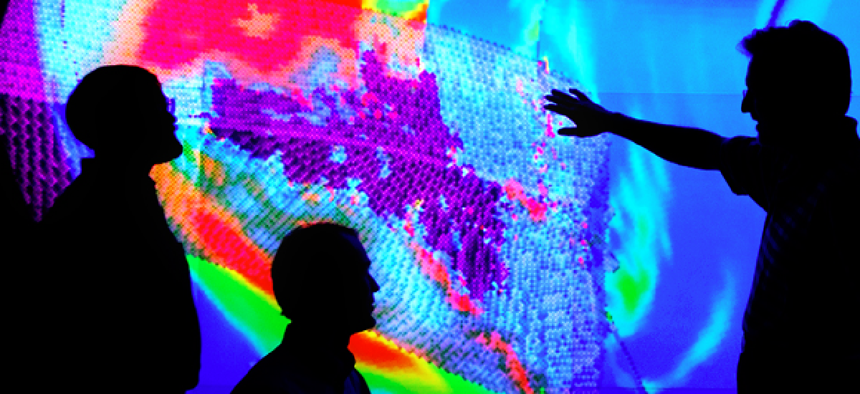Trinity supercomputer to support nuclear stockpile simulations


Connecting state and local government leaders
The National Nuclear Security Administration (NNSA) and Cray Inc., have agreed on a contract for NNSA to acquire a next generation Cray supercomputer, called Trinity, to advance the Stockpile Stewardship Program.
The National Nuclear Security Administration (NNSA) and Cray Inc. have entered into a contract for a next generation supercomputer, called Trinity, to ensure the safety, security and effectiveness of the United States' nuclear stockpile.
Supercomputer manufacturer Cray Inc. announced it will provide the NNSA with a next generation Cray XC supercomputer and a Cray Sonexion storage system.
In what Cray calls one of the largest contracts in the company’s history, the $174 million deal will provide the NNSA with a supercomputing system to advance the mission of the agency’s Stockpile Stewardship Program.
The system is a joint effort between the New Mexico Alliance for Computing at Extreme Scale at the Los Alamos National Laboratory and Sandia National Laboratories and is part of the NNSA Advanced Simulation and Computing (ASC) program.
Trinity will be located at the Los Alamos Lab, but will support all three of the NNSA national laboratories, which include Los Alamos, Sandia and Lawrence Livermore.
Trinity will be sized to run the largest and most demanding simulations of stockpile stewardship, assuring the security and effectiveness of the U.S. nuclear deterrent without the use of underground testing.
Given the pioneering nature of the new system, it is named after the first nuclear weapon test, the Trinity event in July 1945, NNSA said in its announcement.
“Trinity will serve the needs of the men and women who play an important role in solving extremely complex calculations that underpin the success of our nation’s Stockpile Stewardship Program.” said Bob Meisner, NNSA ASC program director. “A very powerful mission-computing system, Trinity begins the transition to new exascale architectures. How well we make that transition has huge impacts on the future of stockpile stewardship.”
Key drivers for Trinity include application performance improvements and larger memory for running more detailed weapons simulations, according to NNSA.
As part of the procurement, a Center of Excellence for Application Transition will be established to ensure success. A collaboration of the NNSA tri-labs, Cray, and Intel, the Center is essential for ensuring key ASC applications will port to perform on the Trinity architecture.
Trinity will also introduce the “Burst Buffer” concept and “Advanced Power Management” as part of the platform. These technologies will be provided as part of a fully integrated system consisting of compute nodes, memory, high speed interconnect and parallel file system, NNSA said.
The NNSA's current supercomputer sited at Los Alamos is a Cray XE6 system named Cielo. The new Trinity system is expected to deliver more than eight times the applications performance than the Cielo system.
Through a phased deployment, Cray will provide the NNSA with a multi-petaflop supercomputing system and a multi-petabyte Cray Sonexion storage system. The Trinity system will be a next-generation version of the Cray XC30 supercomputer, and will include future Intel Xeon Haswell and future Intel Xeon Phi processors called Knights Landing.
The Cray Sonexion storage solution at NNSA will include 82 petabytes of capacity and 1.7 terabytes per-second of sustained performance.
Cray's Sonexion storage system allows scalability from 5 gigabytes per-second to more than a terabyte per-second in a single file.
Management is simplified through an appliance design with all storage components, including software, storage and infrastructure.
Consisting of products and services, the multi-year, multi-phase contract is valued at more than $174 million in total, with substantial system acceptances expected to occur in both late-2015 and 2016.




